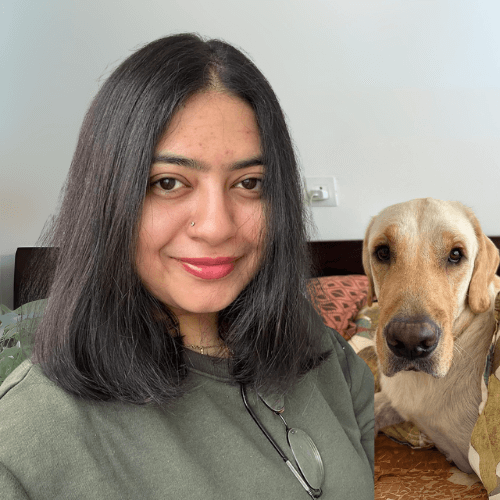
What Is Dog Hip Dysplasia and How Does It Affect Your Pet?
Share
Do You Know What Hip Dysplasia Really Means for Your Dog?
Your dog is running across the yard until suddenly, they hesitate. They may limp, sit awkwardly, or seem less enthusiastic about walks or stairs. If this sounds familiar, you might be seeing the early signs of hip dysplasia, one of the most common and painful joint conditions in dogs.
But what exactly is hip dysplasia? How does it affect your pet’s daily life? And what can you, as a dedicated dog parent, do to help?
At K9 Vitality, we believe understanding is the first step toward relief. This guide will explain everything you need to know about dog hip dysplasia from symptoms and causes to long-term management and prevention.
Whether you’re noticing subtle signs or caring for a senior dog with chronic joint issues, this is your go-to resource for compassionate and informed care.
What Is Hip Dysplasia in Dogs?
 Hip dysplasia is a skeletal condition that affects the hip joints. In a healthy dog, the hip joint is a smooth ball-and-socket structure. In dogs with dysplasia, the ball and socket don’t fit or develop properly, causing friction, grinding, and joint instability.
Hip dysplasia is a skeletal condition that affects the hip joints. In a healthy dog, the hip joint is a smooth ball-and-socket structure. In dogs with dysplasia, the ball and socket don’t fit or develop properly, causing friction, grinding, and joint instability.
Over time, this abnormal movement can lead to:
- Joint inflammation
- Degenerative arthritis
- Muscle loss
- Chronic pain and reduced mobility
It can affect one or both hips, and it typically worsens with age if not addressed early.
Common Causes of Hip Dysplasia
Hip dysplasia is usually caused by a combination of genetics, growth rate, nutrition, and exercise habits.
Risk Factors Include:
- Breed size: More common in large and giant breeds (Labradors, German Shepherds, Rottweilers)
- Genetic predisposition: Hereditary in many cases
- Improper nutrition: Overfeeding puppies or imbalanced calcium
- Rapid weight gain: Excess weight stresses developing joints
- Overexertion in young dogs: Repetitive stress on developing hips
Signs and Symptoms to Watch For
Early signs can be subtle, so it’s important to watch for changes in movement or behavior.
Common Symptoms:
- Bunny hopping when running
- Difficulty rising, climbing stairs, or jumping
- Limping or lameness in hind legs
- Narrow stance or swaying gait
- Decreased activity or reluctance to exercise
- Muscle loss in hind legs
- Audible clicking or popping in the hip
Symptoms may worsen after play, cold weather, or long periods of rest.
How Is Hip Dysplasia Diagnosed?
If you notice any signs, your vet will likely perform:
- Physical examination to assess range of motion and pain
- X-rays to confirm bone structure issues
- Gait analysis to study movement patterns
Early diagnosis helps slow progression and improve quality of life.
How Hip Dysplasia Affects Your Dog’s Life

Hip dysplasia can significantly reduce your dog’s comfort and joy. Chronic pain affects not just mobility, but mood, energy, and even appetite.
Without support, dogs may:
- Avoid play or walks
- Show signs of irritability or aggression
- Gain weight from inactivity, worsening the issue
Over time, untreated hip dysplasia can lead to permanent disability.
But there’s hope with the right care, many dogs live full and active lives.
Treatment Options for Hip Dysplasia
There’s no one-size-fits-all treatment, but your vet may recommend a combination of medical and lifestyle changes.
Non-Surgical Management:
- Weight management to reduce joint strain
- Joint supplements with glucosamine, chondroitin, MSM, and omega-3s
- Anti-inflammatory medications or pain relievers
- Physical therapy and low-impact exercise (like swimming)
- Orthopedic beds and ramps to minimize stress on joints
Surgical Options:
- Juvenile pubic symphysiodesis (for young puppies)
- Double or triple pelvic osteotomy (DPO/TPO)
- Femoral head ostectomy (FHO)
- Total hip replacement
Surgery is typically reserved for severe cases or dogs not responding to conservative care.
How to Prevent Hip Dysplasia (or Slow It Down)
While you can’t always prevent the genetic aspects, there’s a lot you can do to protect your dog’s hips early on.
Preventive Tips:
- Choose breeders who screen for dysplasia
- Feed a balanced, breed-appropriate diet, especially for puppies
- Avoid overfeeding and rapid weight gain
- Provide moderate, controlled exercise during growth periods
- Use joint-support supplements proactively
Why Support From Within Matters Most
While physical therapy, pain relief, and surgery can play a role in managing hip dysplasia, true joint health begins from within. The key to long-term mobility and comfort is in consistently nourishing and strengthening your dog’s joints at the cellular level.
That’s why K9 Vitality’s Hip & Joint Supplement is a trusted solution for pet parents who want to support their dog's active lifestyle with more than just surface-level relief.
Why It Works:
- Glucosamine and Chondroitin: Help maintain joint structure and cushion, supporting smoother movement.
- MSM (Methylsulfonylmethane): A natural anti-inflammatory that supports flexibility and reduces stiffness.
- Boswellia Extract: A powerful herb that promotes pain relief and improves joint function.
- Hyaluronic Acid: Enhances joint lubrication for better mobility.
How It Helps:
- Reduces pain and inflammation linked to hip dysplasia
- Promotes cartilage repair and protection
- Improves mobility and physical activity levels
- Supports aging dogs and those recovering from joint stress
With a dog-friendly taste and vet-formulated blend, this supplement is an easy daily habit that delivers real joint support.
It’s not just about easing pain, it’s about empowering your dog to move freely, play longer, and live better.
Explore more here: Hip & Joint Supplement for Dogs
Conclusion: Supporting Your Dog’s Mobility Starts Now
Hip dysplasia doesn’t mean the end of your dog’s active life. With early intervention, the right support, and a holistic approach, your dog can enjoy years of walks, play, and tail-wagging happiness.
At K9 Vitality, we’re not just about solving problems, we're about empowering pet parents with knowledge and trusted tools. Whether your pup is showing early signs or you’re already managing hip dysplasia, know this: you’re not alone.
Mobility, comfort, and strength are within reach when you start from the inside.
Let K9 Vitality be your guide on this journey.
Stronger joints. Happier walks. Healthier dogs with K9 Vitality.






